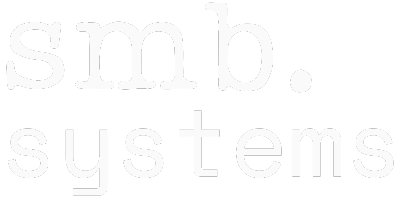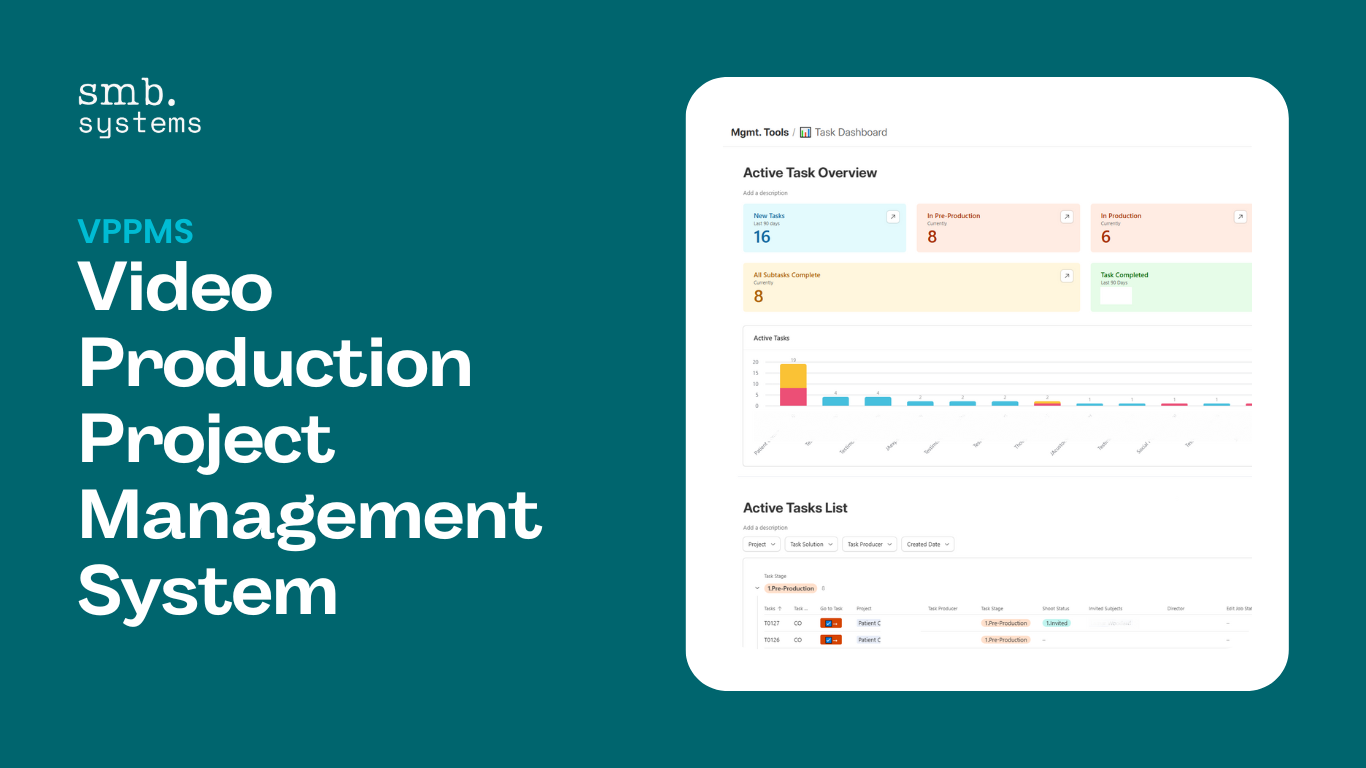Video Production Project Management System (VPPMS)
My video production company, Thoughtcast Media, transitioned to a remote video production model in 2020, when we suddenly weren't able to record on-location any longer.
This dramatic shift in strategy enabled us to scale exponentially, and we needed much more efficient systems to support our work.
A project management system was devised that matches Thoughtcast Media's specific video production workflow.
Built with a single Airtable base and over a dozen Airtable Interfaces, it now serves as the central hub for all of our account management and fulfillment operations, and is used in several different roles throughout the company, as well as by vendors and resellers.
Integrations with our invoicing software (Proposify), booking tool (OnceHub) and video collaboration platform (Frame.io), gives us an end-to-end view of client accounts and business health.
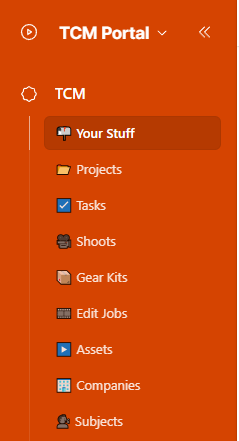
Going Remote & Growing Pains
Originally, Asana was used to manage our video productions, but getting it to work for us was like forcing a square peg into a round hole:
- We were forced to use Asana's taxonomy, which didn't align with our work.
- Managing multiple projects for multiple clients was difficult in Asana.
- Asana's API made it hard to automate processes and integrate with other platforms.
As a result, things were getting lost in the shuffle and we were spending nearly as much time on managing the projects as we were on working on the projects themselves.
A sudden and seemingly unsolvable Asana was the catalyst for pulling together a prototype. A beta was released to our internal team within two weeks, and I began rapidly iteratating on what was informally dubbed, the "TCM Portal."
Interviews were conducted with members of the staff, in order to identify inefficiencies and opportunities for automation, and to design workflows that aligned with how people actually work.
Six months later, our "VPPMS" was integrated with all adjacent systems and all Airtable Interfaces had been fully reengineered, into the streamlined system that you see today, featured on this page.
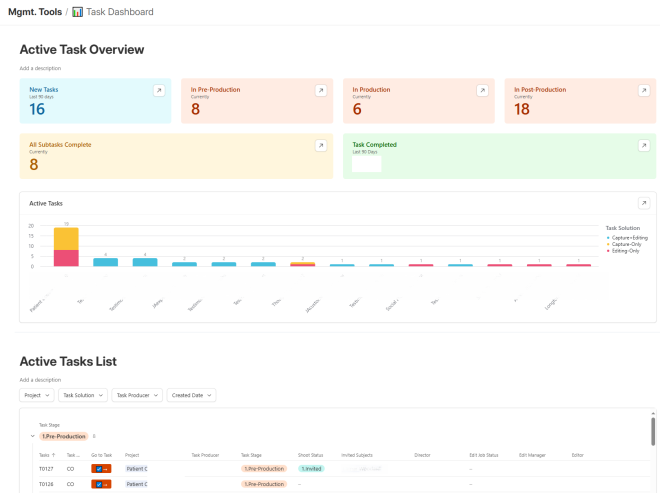
Automated Project Management
To put it gently, by the time we had left Asana, managing a client project and having a clear picture of what was going on was... difficult.
Multiple people had to be counted on throughout the lifecycle of a video task (pre-production through post-production) to update information, send emails or mark a subtask done.
It was important that our new system didn't require such intensive management of the system itself. This is how I solved it:
Holistic Automation: By automating as much as possible, we were able to dramatically reduce the overall number of activities that needed to be tracked. Many automations are triggered from within Airtable, in order to reduce friction, provide transparency and tighten feedback loops.
Reactive Project Management: Instead of having to manually move tasks forward, subtasks get marked complete and tasks progress through their projects automatically, as activities are completed.
Custom Taxonomy: We were no longer beholden to a hierarchy of projects, tasks and subtasks, and are now able to attach video shoots, edit jobs and other entities to tasks.
User Roles and Permissions: Custom roles and permissions can be defined with unrestricted granularity, enabling the ability to grant limited access to vendors and clients.
Automated Scheduling and Communications
The greatest delay in any video project usually revolves around coordination and communications. Switching to Airtable gave us a lot more flexibility on how we integrate with other software platforms, an made it easy to trigger email notifications to everyone involved at various stages of a project.
What once required many human interventions, can now be completed in just a few clicks, and everyone who needs to be in the know is informed automatically by email, across 7 different roles, both internal and external.
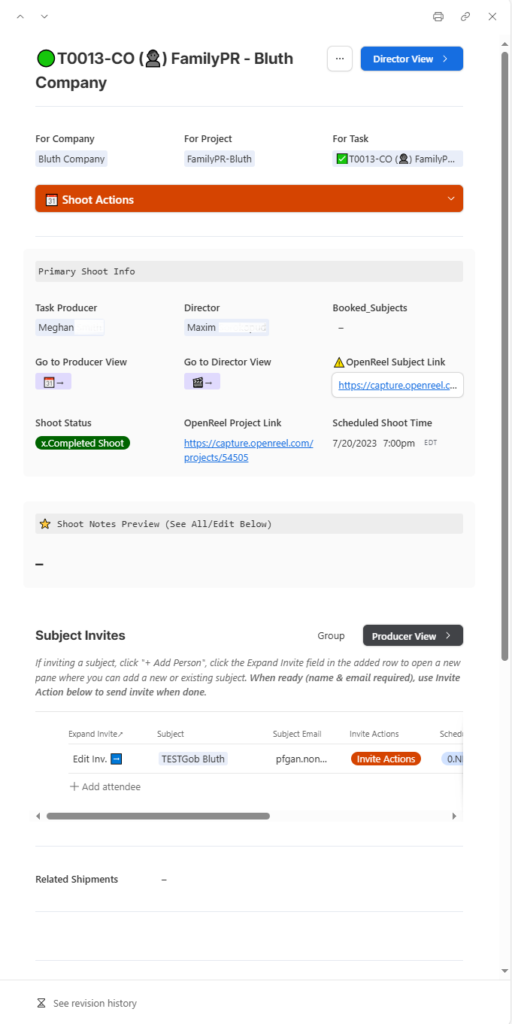
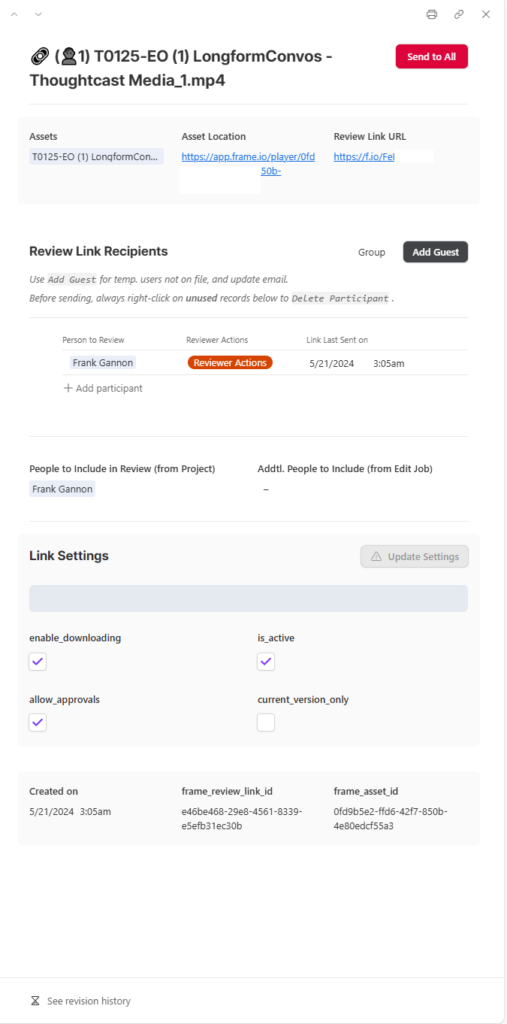
Streamlined Editing Pipeline
We had been using Frame.io from the very beginning, for its best-in-class video collaboration features. What we didn't know is that Frame also has a robust API. This made it easy to exchange data between Airtable and Frame, opening up a world of functionality:
- Edit Managers can issue edit jobs and revisions directly from Airtable
- Automated creation of templated folder structures
- Versioning and status are synced between Frame and Airtable
- Client comments on Frame are aggregated in Airtable to reduce context-switching, and to enable private communication between internal staff and vendors
- Producers, Edit Managers, Editors, Edit Reviewers and other client users are kept in the loop every step of the way
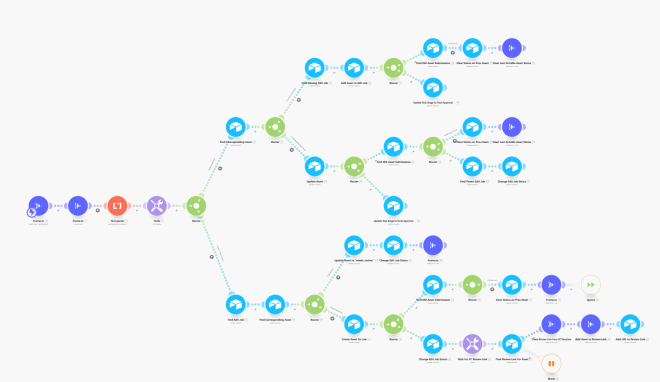
Continued Improvement
The systems, workflows and automations that make up this Video Production Project Management System are constantly being optimized to increase efficiency, reduce costs, and provide a better product to our customers.
Want something like this for your business?
Category:
Personal
Software:



Date:
